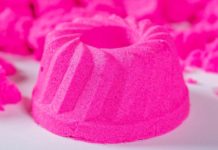Can’t sit, stand, or bend over without feeling pain? Do you feel a lump or bump near your tailbone (coccyx)? If so, you might have a pilonidal cyst.
“A pilonidal cyst is a deep and painful pocket in the skin, usually located above the buttocks' cleft,” explains Yoram Harth, MD, a board-certified dermatologist and the medical director of MDacne in San Francisco. “The cyst starts when a hair grows into the skin, resulting in skin irritation, pain, and frequent accumulation of pus.” (1)
Pronounced "pie-low-NYE-dull," the word means ''nest of hairs.” If the cyst becomes infected, the abscess that results can be very painful. (2)
Causes and Risk Factors of Pilonidal Cyst
Experts don't agree on exactly what causes pilonidal cysts. If you sit for prolonged periods, or wear tight clothing, you may be at higher risk of getting these cysts. (5)
Some believe ingrown hairs (loose hairs that reenter the skin) are triggers. The skin then responds to the hair as if it were a foreign body and forms a cyst around it. (4)
This chain of events explains pilonidal cysts that affect body parts other than the tailbone area. For instance, the cysts can develop in the skin between the fingers among barbers and dog groomers. (1)
According to another theory, as deep layers of the skin stretch, the hair follicle enlarges and ruptures, and then cyst forms around the follicle that ruptures. The follicle is the structure from which a hair grows out. (6)


Why You Shouldn’t Skip Your Dermatology Appointment During COVID-19
Some experts believe pilonidal cysts occur after trauma to that body area.
Many World War II soldiers, for example, had pilonidal cysts. Experts blamed those cysts on the chronic irritation that occurred when the soldiers rode in jeeps over bumpy terrain. (7)
The condition was even known as "jeep disease" for a time.
Some factors may increase the risk of getting a pilonidal cyst. Among them: (5)
- Being obese
- Being inactive
- Working at a job that requires long sitting times (such as truck driving)
- Having excess body hair
- Having stiff or coarse hair
- Having poor hygiene
Sometimes, pilonidal cysts are hereditary. Rough body hair and ingrown hairs may run in your family, increasing your risk of developing a cyst. (5)
Prognosis of Pilonidal Cyst
A pilonidal cyst can be extremely painful, especially if it becomes infected. But the condition in itself isn’t life-threatening, and the outlook is positive with treatment. (8)
Keep in mind, though, pilonidal cysts can become chronic when those that do not drain on their own are left untreated. (8) In those cases, seek treatment to avoid worsening of symptoms.
Treatment and Medication Options for Pilonidal Cyst
Treatment for a pilonidal cyst depends on the severity of symptoms and the infection. (4) The following are some possible treatment methods.
Draining the Cyst
Treatment to drain a cyst is typically completed in the doctor's office or a same-day surgery center. Your doctor will numb the area with an injection and then make a small incision, draining the cyst. This is commonly known as an I&D (incision and drainage). (10)
Medications
In addition, you may receive antibiotics so that the infection doesn’t spread. (4) It’s important to note that while treatment with topical and oral antibiotics can temporarily reduce pain, these medications don’t eliminate the cyst, warns Harth. (11)
Surgery
Sometimes, surgery is needed to remove the cyst entirely. This procedure is called a pilonidal cystectomy.
After surgery, your doctor may leave the wound open, packing it with dressing so it can support drainage, or may need a temporary draining tube. This approach has a longer healing time, but a lower chance of the infection returning than closing the wound with stitches. (10)
Your doctor will show you how to change the dressing before you go home, and will explain what follow-up is needed if a tube is placed. The doctor will also likely monitor you for healing and any signs of infection with follow-up visits. (12)
Prevention of Pilonidal Cyst
“A main cause of pilonidal cysts are free hair shafts that break through the skin, so removing hairs from the area around the cyst can prevent cysts from forming or recurring,” says Ife Rodney, MD, the founding director of Eternal Dermatology and Aesthetics in Fulton, Maryland. (1)
“Practicing good hygiene and keeping the lower back clean and dry may help prevent pilonidal cysts, too, as this prevents bacteria from getting into the cyst, says Dr. Rodney. (1)
Other measures that can prevent an infection from returning include: (13)
- Clean the area with mild soap and water. Rinse well to get rid of soap residue.
- Take frequent breaks if you have to sit for long periods.
- Don't wear tight clothing, as this can force hair down into the skin.
- Soak in a warm bathtub of water for pain relief.
- Laser hair removal may reduce the risk of recurrence. (14)
Research and Statistics: Who Has Pilonidal Cysts and How Prevalent Are These Cysts?
Pilonidal cysts are common, with more than 70,000 cases reported in the United States each year. Anyone can develop this condition, but it’s more common in young men, says Harth. (5) In fact, men are about three to four times more likely to develop this condition than women. It typically occurs between ages 20 and 35. (5)
Resources We Love
Favorite Organizations for Essential Pilonidal Cyst Information
KidsHealth
Although pilonidal cysts are more common among young men, it can affect children, too. KidsHealth provides information to help you identify this skin condition in your child. You’ll also find advice on ways to treat this condition at home.
Cleveland Clinic
Whether you need information on prevention, treatment, or diagnosis, the Cleveland Clinic gives a comprehensive overview of pilonidal cysts. You’ll find answers to common questions about this condition, as well as other helpful wellness information.
American Society of Colon and Rectal Surgeons (ASCRS)
The ASCRS provides a thorough overview of pilonidal cysts and other useful resources related to this condition. This includes images and a video explaining causes and symptoms.
Best Online Support Network
Pilonidal Support Alliance
If you have pilonidal disease, this website is an excellent place to learn more about your condition and receive support from a community. You can share your personal story, read the experiences of others, or drop by the patient forum to ask a question or get tips.
Favorite Site for Telemedicine
MDLive
Think you might have a pilonidal cyst? If you have questions, concerns, or need a diagnosis, you can speak with an online dermatologist anytime, anywhere. Simply upload a photo of your skin. For treatment, though, you’ll need to see a local doctor.
Editorial Sources and Fact-Checking
- Pilonidal Cyst: Overview. Mayo Clinic. November 21, 2018.
- Ngan V. Pilonidal Disease. DermNet. 2003.
- Pilonidal Sinus. NHS. December 6, 2017.
- Pilonidal Cyst. KidsHealth. January 2020.
- Pilonidal Cyst: Overview. Cleveland Clinic. July 6, 2020.
- Bascom J. Surgical Treatment for Pilonidal Disease. BMJ. April 19, 2008.
- Pilonidal Cyst: Diagnosis and Tests. Cleveland Clinic. July 6, 2020.
- Pilonidal Cyst: Outlook and Prognosis. Cleveland Clinic. July 6, 2020.
- Tailbone Cyst Removal (Pilonidal Cystectomy). Summit Medical Group. 2014.
- Pilonidal Cyst: Diagnosis. Mayo Clinic. November 21, 2018.
- Pilonidal Cyst: Management and Treatment. Cleveland Clinic. July 6, 2020.
- Surgery for Pilonidal Cyst. MedlinePlus. September 16, 2020.
- Pilonidal Cyst: Prevention. Cleveland Clinic. July 6, 2020.
- Ghnnam WM, Hafez DM. Laser Hair Removal as Adjunct to Surgery for Pilonidal Sinus: Our Initial Experience. Journal of Cutaneous and Aesthetic Surgery. September 2011.
- Halleran D, Lopez J, et al. Recurrence of Pilonidal Disease: Our Best Is Not Good Enough. Journal of Surgical Research. December 1, 2018.
- Pilonidal Cyst. University of Virginia Health. 2020.













































